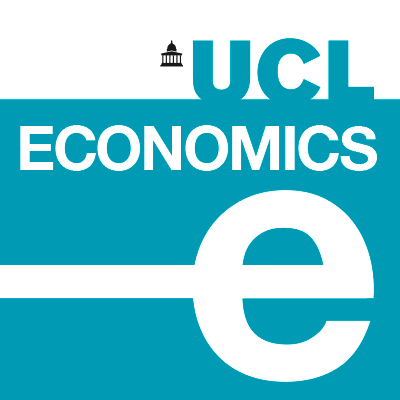
Tom Zawisza
tazawisza [at] gmail.com

University College London
Gower Street
London
WC1E 6BT
UNITED KINGDOM
Tel: +44 (0) 20 7679 2000

Institute for Fiscal Studies
7 Ridgmount Street
Fitzrovia
London
WC1E 7AE
UNITED KINGDOM
Tel: +44 (0) 207 291 4800
TOM ZAWISZA
Economist
OECD
CURRICULUM VITAE
Biography
I am a public sector economist at the OECD, working primarily on questions related to personal and business taxation. I completed my PhD was at the Faculty of Economics, University of Cambridge, where I worked under the supervision of Professor Hamish Low. I was also a Max Weber Fellow at the European University Institute in Florence, Italy, and a British Academy Postdoctoral Fellow at UCL in London.
My research has also focused on analyzing the insurance and incentive effects of tax and welfare policy. I am looking at this problem from two perspectives: a theoretical one, where I model individuals as forward-looking agents making optimal saving and labour-supply choices; and an empirical one, where I attempt to identify structural parameters of models from the data.
Papers
(Conditional Acceptance, Review of Economic Studies)
"Labor Supply and the Pension Contribution-Benefit Link" , with Eric French, Attila Lindner and Cormac O'Dea
Abstract: We estimate the impact of public pension systems on labor supply far from the normal retirement age by exploiting Poland's switch from a Defined Benefit to a Notional Defined Contribution scheme for men born after 1948. Using the universe of taxpayers and this sharp cohort-based discontinuity in the link between current contributions and future benefits, we estimate an employment elasticity with respect to the return to work of 0.44 for ages 51-54. We estimate a lifecycle model that matches these results. The model implies that the change in the contribution-benefit link from the reform increases employment among those in their 30s but decreases it at older ages, reducing overall labor supply across the lifecycle by 2 months.
(R&R, Journal of Public Economics) , with Justyna Klejdysz
"Taxation and Business Entry: Evidence from the Polish Self-Employment "Flat" Tax"
Abstract: How does the tax treatment of entrepreneurial activity affect the decision to start a business? We study this question in the context of a major tax reform in Poland that introduced a flat tax for business owners, leaving the taxation of employees unchanged. Using a difference-in-differences framework and data on the universe of Polish taxpayers, we find that a 1 percentage point increase in the tax differential at the top of the income distribution leads to a 1.4\% increase in the share of self-employed five years after the reform. The increase is primarily driven by transitions from employment to self-employment, in particular solo self-employment (self-employment without dependent workers). Moreover, the transitions occur in industries with a high human-capital component. Altogether, we find that high-income taxpayers respond strongly to the increased attractiveness of self-employment by starting a business, that such behavior shows considerable persistence, that it accumulates over time, and much of it is likely to reflect income reclassification rather than genuine entrepreneurial activity.
(World Inequality Lab Working Paper)
"Political conflict, social inequality and electoral cleavages in Central-Eastern Europe, 1990-2018" , with Attila Lindner, Filip Novokmet and Thomas Piketty
Abstract: This paper analyses the electoral cleavages in three Central European countries countries—the Czech Republic, Hungary and Poland—since the fall of communism until today. In all three countries, the left has seen a prolonged decline in support. On the other hand, the “populist” parties increased their support and recently attained power in each country. We relate this to specific trajectories of post-communist transition. Former communist parties in Hungary and Poland transformed themselves into social-democratic parties. These parties' pro-market policies led to a gradual erosion of their traditional support. Meanwhile, the liberal right in the Czech Republic and Poland became representative of both high-income and high-educated voters. This has opened up space for populist parties and influenced their character, assuming more ‘nativist’ outlook in Poland and Hungary and more ‘centrist’ in the Czech Republic.
(Work in progress)
"Saving Behaviour of Disability Insurance Applicants: Are Waiting Times Effective
Screening Devices?", with Hamish Low and Luigi Pistaferri
Abstract: The paper examines the consumption and saving behaviour of Disability Insurance (DI) applicants using a life-cycle model. We include a two-dimensional health process which determines an individuals health, and has implications for the chances of succeeding at the application and appeals stage. Saving behaviour for disability applicants of different types is examined, testing the validity of the predictions of Golosov and Tsyvinski (2006). The model provides an explanation for higher saving rates observed among moderately or 'non-verifiably' disabled individuals. The paper finally asks whether the length of the compulsory time out of the labour force before making a DI application can improve the DI system in terms of the insurance-efficiency trade-off.
(Work in progress)
"Disability and disability risk over the life-cycle"
Abstract: This paper estimates the dynamics of health using a dynamic panel factor model on data from the Health and Retirement Study (HRS). It finds that the many potentially collinear health indicators found in the HRS can be summarized into two underlying factors. The first of these corresponds to subjective health measures, such as self-assessed mobility, while the other corresponds to more objective measures of health-care utilization, such as the number of overnight hospital stays. The dynamics of the factors are estimated as an underlying VAR process, and the discreteness of the HRS health indicators is dealt with by assuming a multinomial functional form. The model as a whole is estimated using the Generalized Autregressive Score (GAS) approach of Creal, Koopman and Lucas (2013).
Policy-focused papers
"Banking Sector Efficiency in Sub-Saharan Africa", with Francois Boutin-Dufresne and Oral Williams, Journal of African Economies , 2014, 1-27.
Abstract: This paper examines the determinants of net interest margins in four regional blocks in Sub-Saharan Africa. Using bank-level data, we find that countries with a high level of operating costs, a high low level of non-interest income, a high ratio of equity to total assets and high treasury-bill interest rates have higher net interest margins. Moreover, high operating costs are associated with low measures of institutional quality and a small size of bank operations. We find support for the view that market structure is also partly responsible for high net interest margins in Sub-Saharan Africa, although quantitatively this effect is somewhat less important. High operating costs, high treasury-bill rates and a high ratio of equity to total assets and, indirectly, institutional factors such as the rule of law, are the most important factors in accounting for high interest margins in the East African Community, relative to other regions.